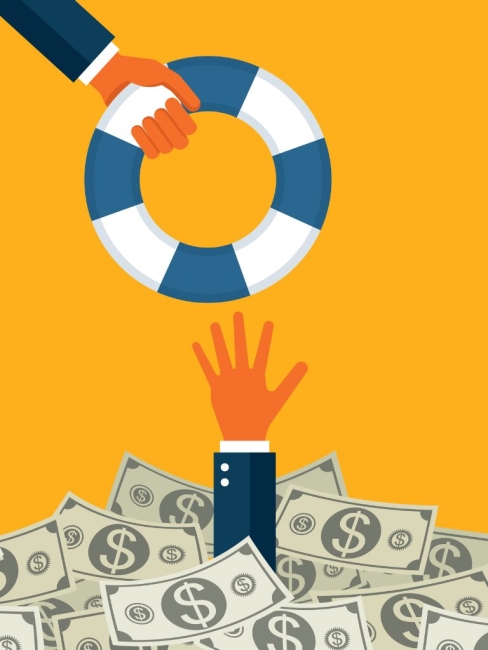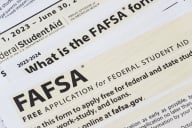You have /5 articles left.
Sign up for a free account or log in.

Getty Images
The uniquely American experiment since the 1980s of viewing college as mainly benefiting graduates and passing rising expenses along to students and families has been a costly failure, recent Public Agenda–USA Today polling suggests.
The decision by the Biden administration Wednesday to address college debt-financing woes by canceling up to $10,000 in student loan debt for borrowers making under $125,000, and up to $20,000 for individuals who’d received federal Pell Grants to attend college, underscores the consequences of decades of misdirected policies.
College costs have nearly tripled since 1980, after accounting for inflation, putting college out of reach for many, especially when you factor in wealth inequality from practices such as redlining that made it difficult for people to build savings. Not to mention pay for Black and brown Americans is unequal and unfair, making it tougher to pay back college loans.
The Biden administration estimates that 20 million borrowers could have their full remaining balances canceled if all borrowers claim the relief they’re entitled to. But Wednesday’s much-anticipated announcement addresses only a symptom of the return-on-investment skepticism that has contributed to steep college enrollment declines.
Colleges must build a stronger case for the value of higher education. This case-making should begin with acknowledging shortcomings and committing to delivering education and training that prepare people for meaningful work and community participation.
The country needs more college-educated adults to prepare for the future. To help the nation get there, colleges must offer affordable pathways that deliver tangible benefits for individuals and society. Without dramatic action, new student debt will start to accrue immediately.
Many Americans no longer seem willing to acknowledge that everyone benefits when more people go to college. The nation has abandoned a commitment to higher education as a public good that confers personal benefits. By default, elected officials and college leaders have allowed tuition to spiral, seriously harming today’s students, many of whom hold jobs, have family responsibilities and are racially and ethnically diverse. These students were told to suck it up and borrow to get ahead.
Today, nearly 45 million adults are paying on federal student loans totaling more than $1.6 trillion. More than six in 10 Americans who graduated from public and private nonprofit colleges in 2019 took out student loans, owing an average of $28,950. Two-thirds of people who default on loans owe less than $10,000, and many did not finish their degree.
Students who are the first in their families to attend college, who served in the military or who have children face higher risks of default. Black women spend a greater share of their incomes on repayment than anyone else, and 12 years after starting college, the typical Black borrower who first enrolled in 2003–04 owed more than the original loan amount.
All of this affects how people view their college experience. About two-thirds of Americans told Public Agenda–USA Today colleges are stuck in the past and aren’t meeting the needs of today’s students. Almost six of every seven of the 1,662 adults who responded to the May 2022 poll also said the expense of going to college makes it tough on people from low-income families. And roughly 60 percent agreed earning a college degree is “too time-consuming and expensive for working adults.”
Through his actions this week, President Biden fulfilled a campaign pledge. In doing so, he satisfied very few. Canceling a slice of debt among borrowers with the lowest incomes scratches the surface of all that is wrong with higher education.
You will hear loan cancellation is a one-time taxpayer giveaway. You will hear capping loan cancellation at $10,000 (or $20,000 for Pell recipients) and applying an income test do not go far enough. Other steps the administration has taken—including simplifying loan forgiveness for public service, eliminating debt among students defrauded by for-profit colleges and giving borrowers in default a path back to good standing—all are moves in the right direction by Biden.
Yet these steps do not make education affordable.
Nor do they address how education and training can position people for better lives and good jobs.
For those reasons, some criticism is justified.
But making affordable higher education that helps people live better lives, improves communities and boosts the economy is a bigger challenge than the president alone can meet.








